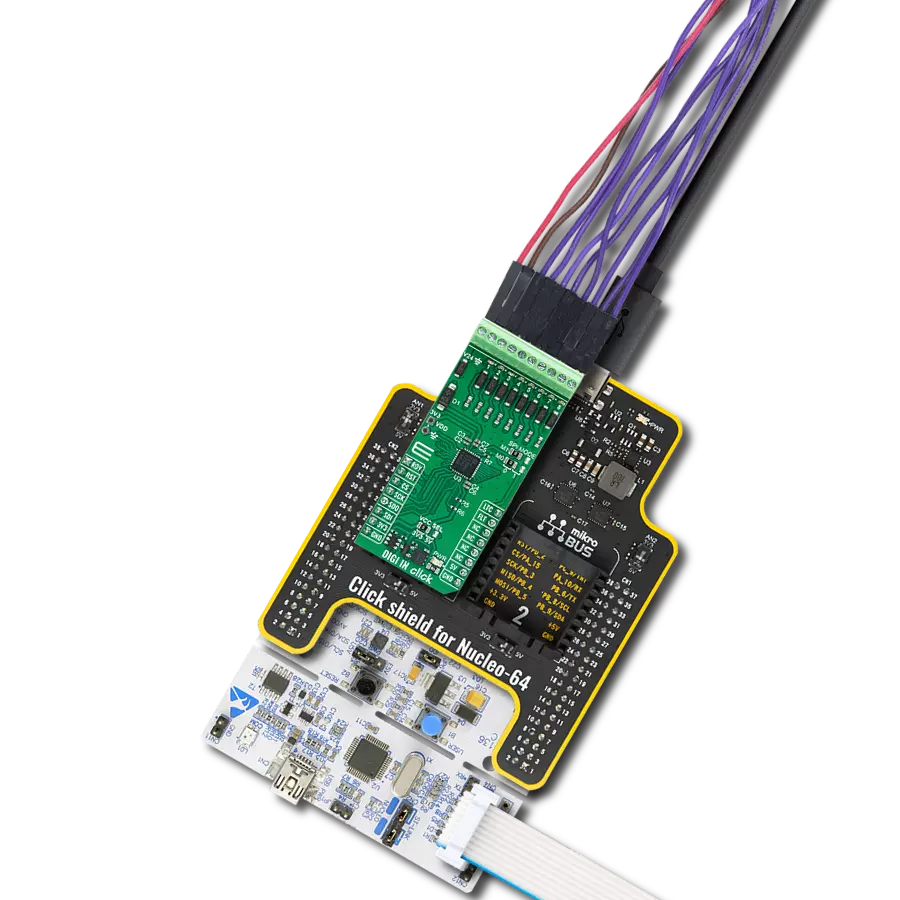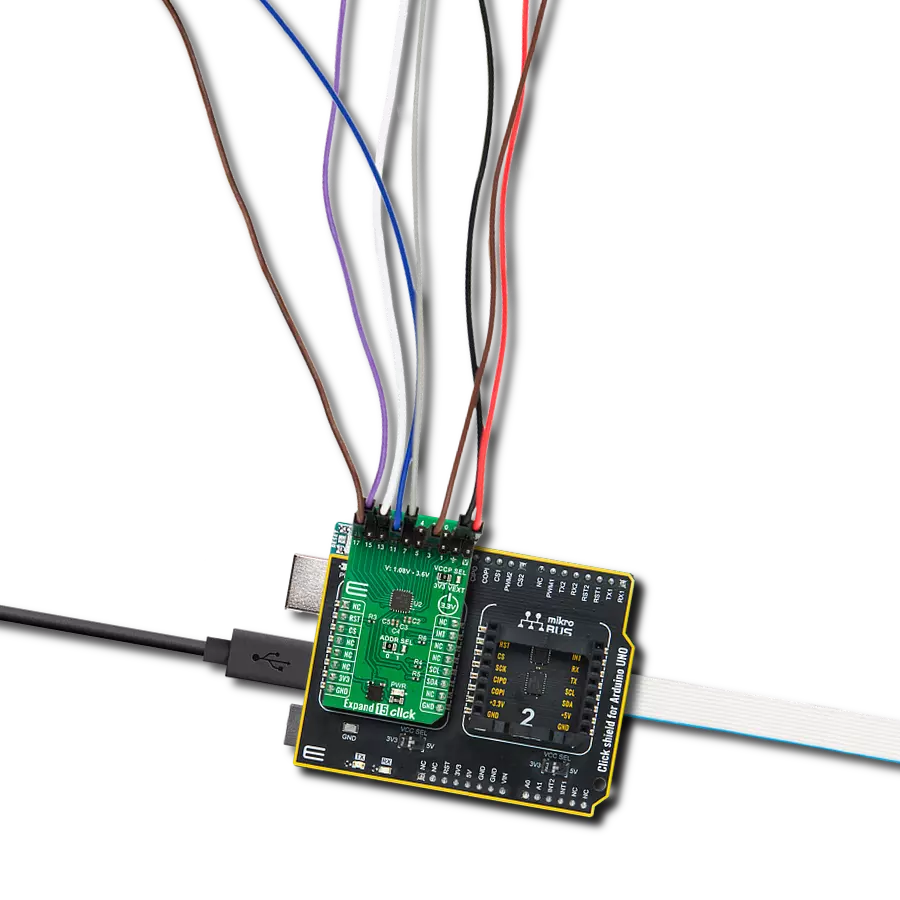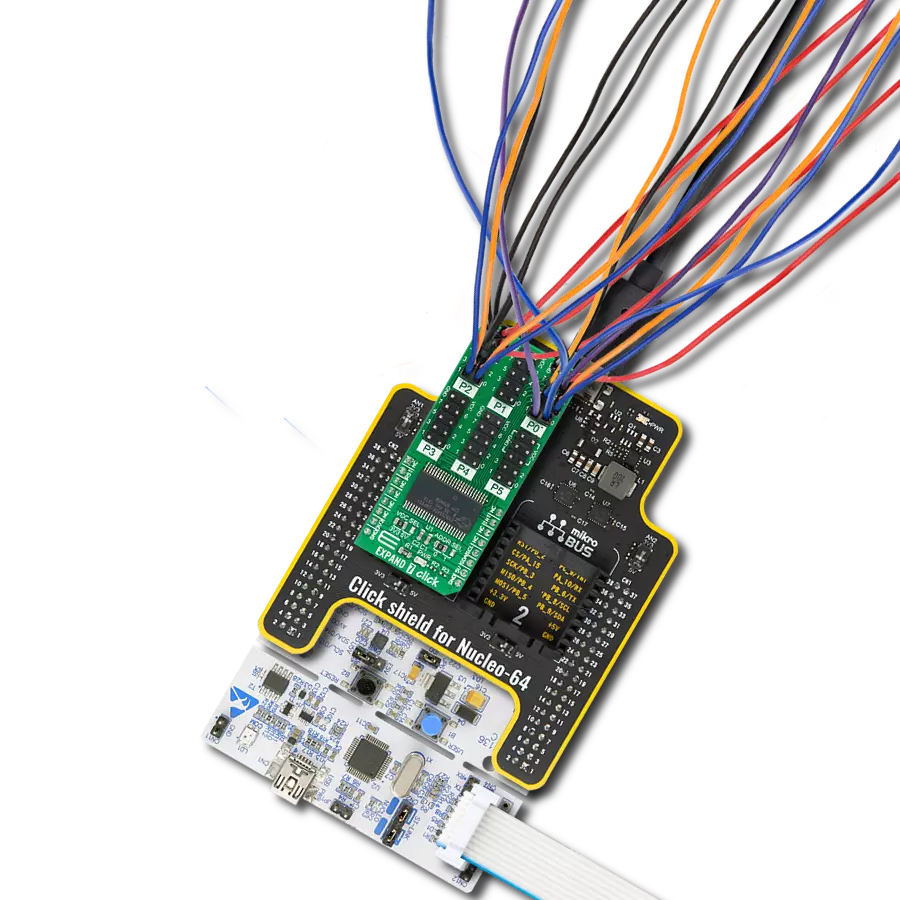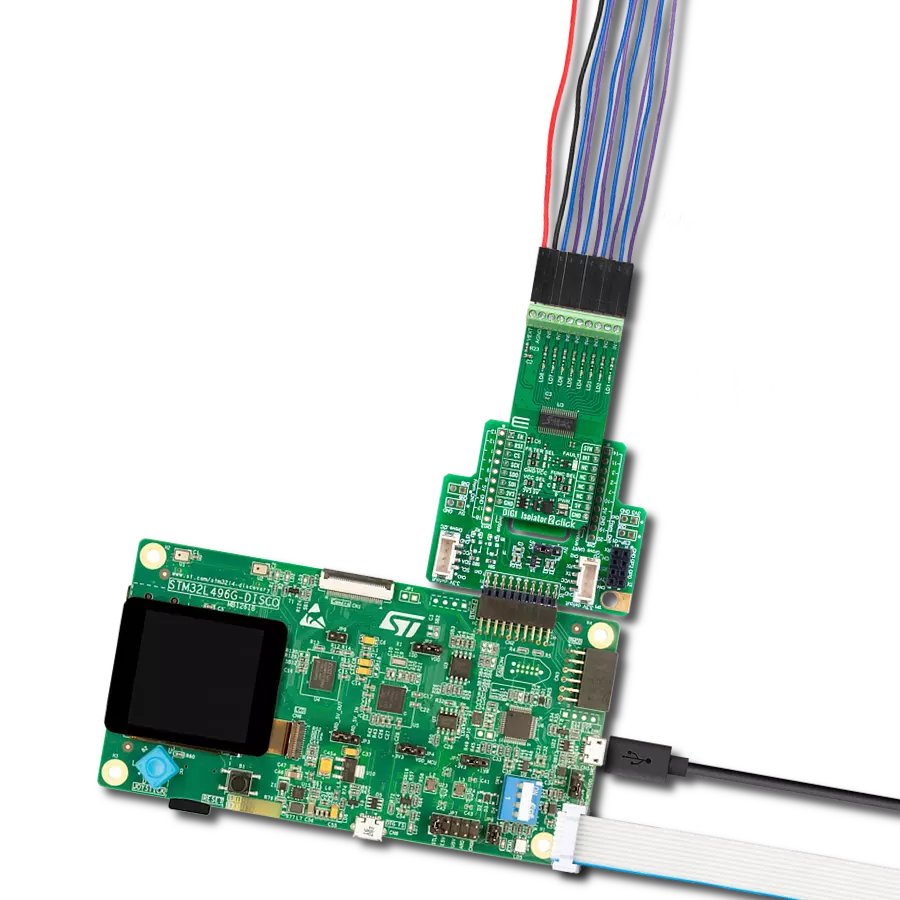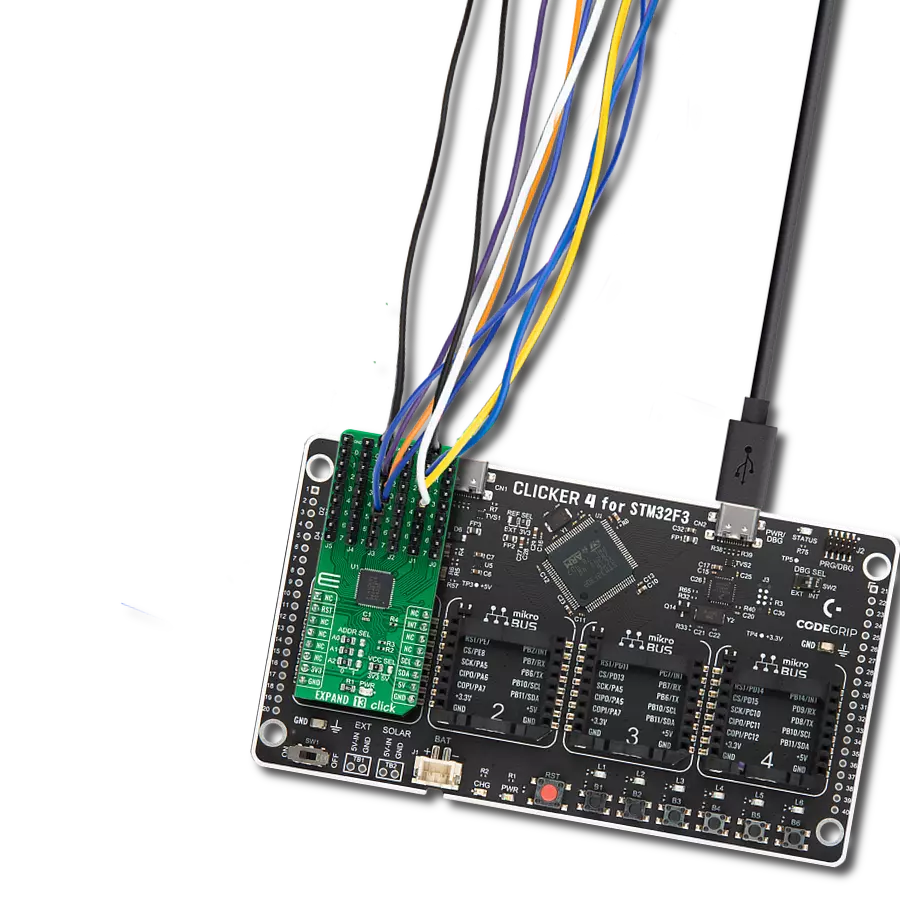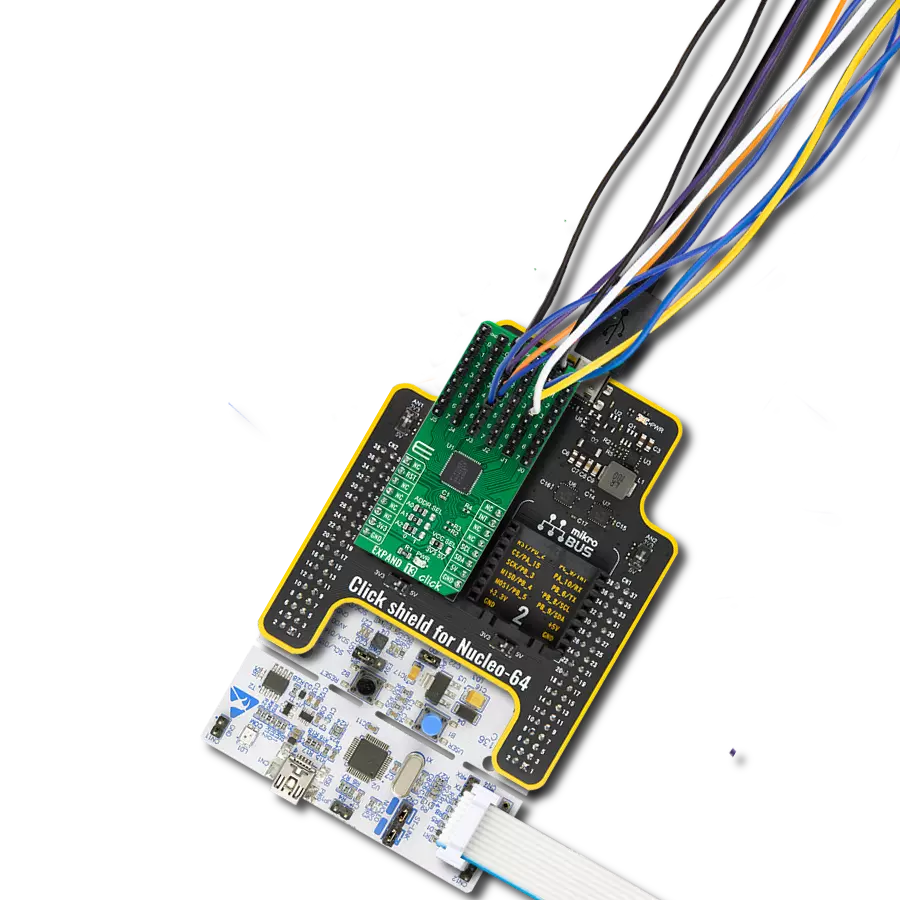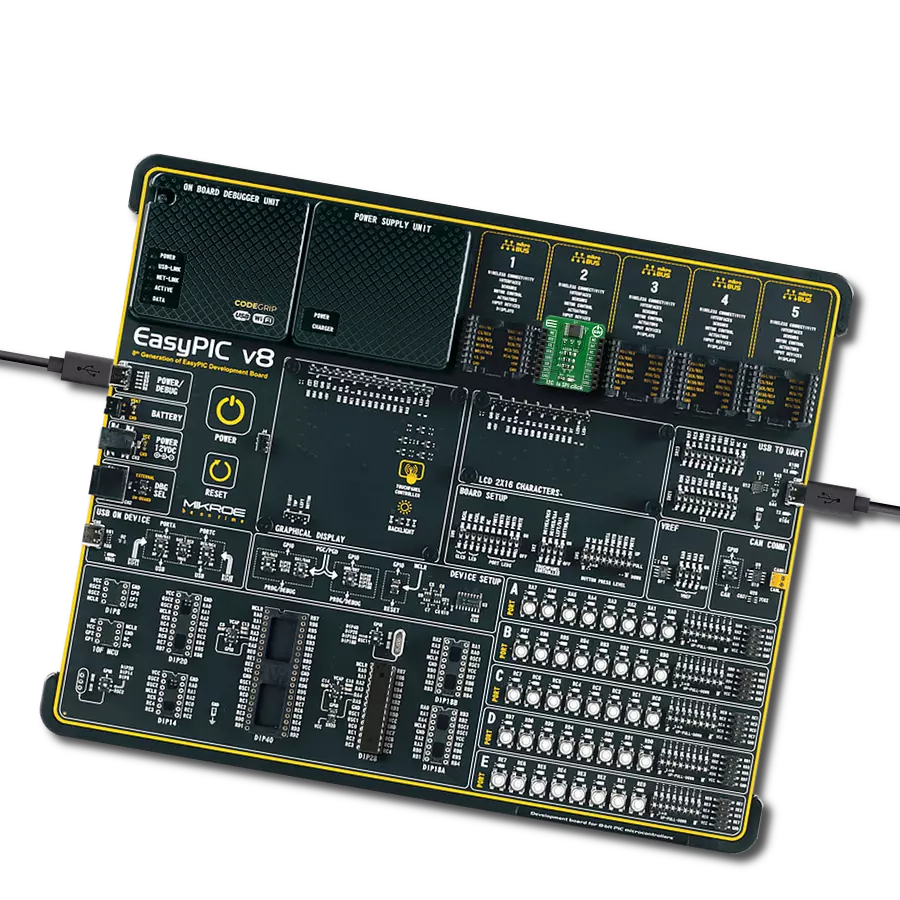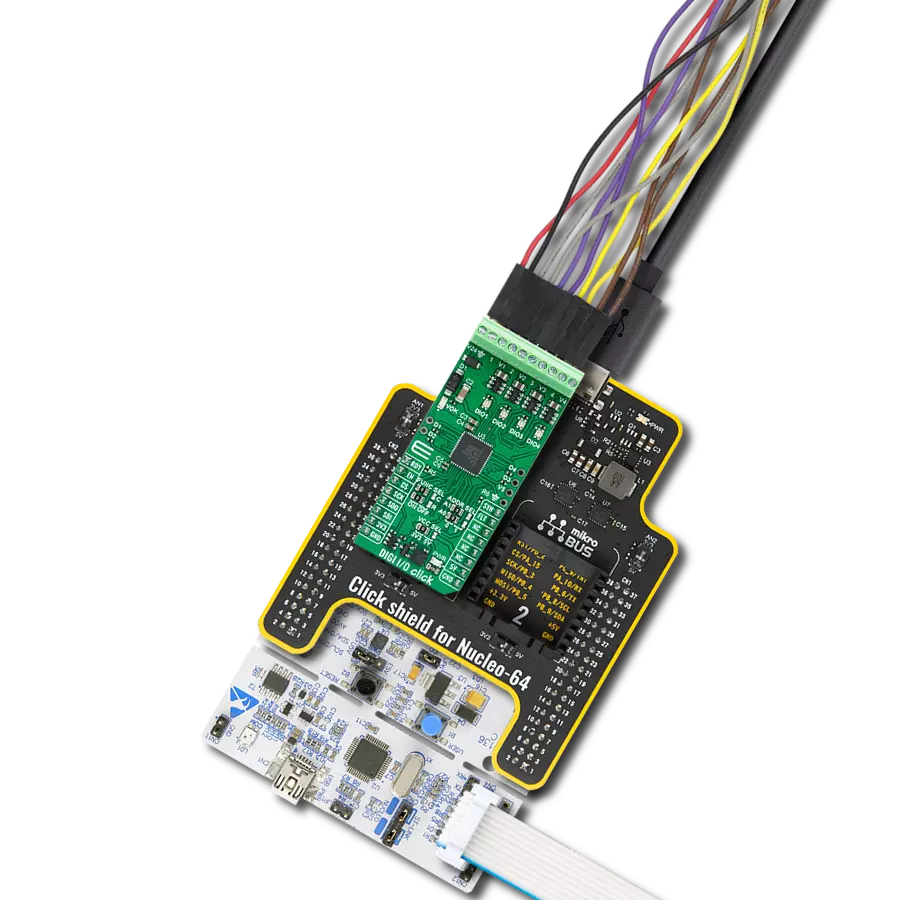Safely interface with high-voltage industrial signals and convert them to logic levels for controlling machinery and processes.
A
A
Hardware Overview
How does it work?
DIGI IN 2 Click is based on the MAX22196, a high-performance octal industrial sink/source digital input IC from Analog Devices. This IC converts eight high-voltage (8V-24V) industrial inputs across channels 1 to 8 into standard logic-level outputs. It incorporates a serial interface for configuring and reading data in a serialized format via SPI. Each input channel can be individually set to operate as sinking (P-type) or sourcing (N-type), with built-in current limiters to reduce power wastage while adhering to the IEC 61131-2 standards. This Click board™ is ideal for various applications, including Programmable Logic Controllers (PLC), factory automation, and process control systems. A distinctive feature of the MAX22196 is its ability to meet IEC 61131-2 Type 1/3 or Type 2 digital input requirements using a single resistor (R7) set at 12kΩ. The device offers flexibility by allowing the users to turn off current sinks or sources. Furthermore, each input channel has a customizable glitch/debounce filter and an optional 16-bit down-counter for enhanced input signal processing. The MAX22196 can draw power from a field supply ranging from 8V to 24V, including a
green LED (VOK), to indicate the presence of a stable field supply. An on-chip 5V linear regulator is another hallmark of the MAX22196, capable of delivering up to 20mA of load current to the VA header, which is left unpopulated. This on-chip regulator can be enabled via the FUNC SEL "R" jumper by placing its position from OFF to ON state. While it's in the OFF position, the VA terminal presents a 5V linear regulator output, and the ON position presents a supply input powered by mikroBUS power rail™ (3.3V or 5V). Regarding communication, the DIGI IN 2 Click interfaces with the host MCU through SPI to perform input data reading, diagnostic data acquisition, and register configuration at speeds up to 12MHz. The voltages at the 1-8 input terminals are compared against internal references to determine whether the field binary output sensor is ON (logic 1) or OFF (logic 0). All eight inputs are simultaneously latched by the assertion of either latch LTC or CS pins, and the data is made available in a serialized form through the SPI. Notably, the MAX22196 can address up to four devices on a shared SPI bus using ADDR SEL jumpers for direct access, and it
supports daisy-chaining through the FUNC SEL "D" jumper. The MAX22196 also features a fault indicator (FLT pin) for communicating various operational errors to the host MCU, including power supply undervoltage, overtemperature conditions, and CRC errors. The READY RDY signal confirms that the MAX22196 is powered on and operational. CRC error detection is enabled by default for enhanced data integrity, which is particularly beneficial in both addressable and daisy-chain SPI configurations. To visually present the status of its digital inputs, the board is equipped with a 3x3 yellow LED driver crossbar matrix. The ninth LED, positioned in the lower-left corner, mirrors the functionality of the VOK LED, providing a quick visual reference for the board's operational status. This Click board™ can operate with either 3.3V or 5V logic voltage levels selected via the VCC SEL jumper. This way, both 3.3V and 5V capable MCUs can use the communication lines properly. Also, this Click board™ comes equipped with a library containing easy-to-use functions and an example code that can be used as a reference for further development.
Features overview
Development board
Clicker 2 for Kinetis is a compact starter development board that brings the flexibility of add-on Click boards™ to your favorite microcontroller, making it a perfect starter kit for implementing your ideas. It comes with an onboard 32-bit ARM Cortex-M4F microcontroller, the MK64FN1M0VDC12 from NXP Semiconductors, two mikroBUS™ sockets for Click board™ connectivity, a USB connector, LED indicators, buttons, a JTAG programmer connector, and two 26-pin headers for interfacing with external electronics. Its compact design with clear and easily recognizable silkscreen markings allows you to build gadgets with unique functionalities and
features quickly. Each part of the Clicker 2 for Kinetis development kit contains the components necessary for the most efficient operation of the same board. In addition to the possibility of choosing the Clicker 2 for Kinetis programming method, using a USB HID mikroBootloader or an external mikroProg connector for Kinetis programmer, the Clicker 2 board also includes a clean and regulated power supply module for the development kit. It provides two ways of board-powering; through the USB Micro-B cable, where onboard voltage regulators provide the appropriate voltage levels to each component on the board, or
using a Li-Polymer battery via an onboard battery connector. All communication methods that mikroBUS™ itself supports are on this board, including the well-established mikroBUS™ socket, reset button, and several user-configurable buttons and LED indicators. Clicker 2 for Kinetis is an integral part of the Mikroe ecosystem, allowing you to create a new application in minutes. Natively supported by Mikroe software tools, it covers many aspects of prototyping thanks to a considerable number of different Click boards™ (over a thousand boards), the number of which is growing every day.
Microcontroller Overview
MCU Card / MCU
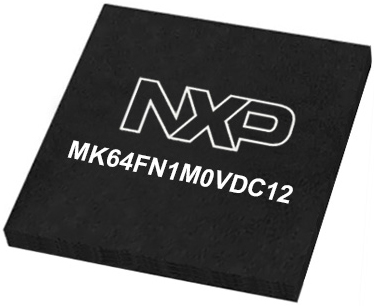
Architecture
ARM Cortex-M4
MCU Memory (KB)
1024
Silicon Vendor
NXP
Pin count
121
RAM (Bytes)
262144
Used MCU Pins
mikroBUS™ mapper
Take a closer look
Click board™ Schematic

Step by step
Project assembly
Track your results in real time
Application Output
1. Application Output - In Debug mode, the 'Application Output' window enables real-time data monitoring, offering direct insight into execution results. Ensure proper data display by configuring the environment correctly using the provided tutorial.

2. UART Terminal - Use the UART Terminal to monitor data transmission via a USB to UART converter, allowing direct communication between the Click board™ and your development system. Configure the baud rate and other serial settings according to your project's requirements to ensure proper functionality. For step-by-step setup instructions, refer to the provided tutorial.

3. Plot Output - The Plot feature offers a powerful way to visualize real-time sensor data, enabling trend analysis, debugging, and comparison of multiple data points. To set it up correctly, follow the provided tutorial, which includes a step-by-step example of using the Plot feature to display Click board™ readings. To use the Plot feature in your code, use the function: plot(*insert_graph_name*, variable_name);. This is a general format, and it is up to the user to replace 'insert_graph_name' with the actual graph name and 'variable_name' with the parameter to be displayed.

Software Support
Library Description
This library contains API for DIGI IN 2 Click driver.
Key functions:
digiin2_get_flt_pin- This function is used to get state of the FLT pindigiin2_write_reg- This function is used to write data into the selected register by using SPI serial interfacedigiin2_read_reg- This function reads a data byte from the selected register by using SPI serial interface
Open Source
Code example
The complete application code and a ready-to-use project are available through the NECTO Studio Package Manager for direct installation in the NECTO Studio. The application code can also be found on the MIKROE GitHub account.
/*!
* @file main.c
* @brief DIGI IN 2 Click example
*
* # Description
* This example demonstrates the use of DIGI IN 2 Click board by reading and
* displaying the state of the channels.
*
* The demo application is composed of two sections :
*
* ## Application Init
* Initializes the driver, performs the Click default configuration.
*
* ## Application Task
* Reads and displays on the USB UART the channel state every second.
*
* @author Stefan Ilic
*
*/
#include "board.h"
#include "log.h"
#include "digiin2.h"
static digiin2_t digiin2;
static log_t logger;
void application_init ( void )
{
log_cfg_t log_cfg; /**< Logger config object. */
digiin2_cfg_t digiin2_cfg; /**< Click config object. */
/**
* Logger initialization.
* Default baud rate: 115200
* Default log level: LOG_LEVEL_DEBUG
* @note If USB_UART_RX and USB_UART_TX
* are defined as HAL_PIN_NC, you will
* need to define them manually for log to work.
* See @b LOG_MAP_USB_UART macro definition for detailed explanation.
*/
LOG_MAP_USB_UART( log_cfg );
log_init( &logger, &log_cfg );
log_info( &logger, " Application Init " );
// Click initialization.
digiin2_cfg_setup( &digiin2_cfg );
DIGIIN2_MAP_MIKROBUS( digiin2_cfg, MIKROBUS_1 );
if ( SPI_MASTER_ERROR == digiin2_init( &digiin2, &digiin2_cfg ) )
{
log_error( &logger, " Communication init." );
for ( ; ; );
}
if ( DIGIIN2_ERROR == digiin2_default_cfg ( &digiin2 ) )
{
log_error( &logger, " Default configuration." );
for ( ; ; );
}
log_info( &logger, " Application Task " );
}
void application_task ( void )
{
uint8_t channel_data = 0;
digiin2_pulse_latch( &digiin2 );
if ( DIGIIN2_OK == digiin2_read_reg( &digiin2, DIGIIN2_REG_DISTATE, &channel_data ) )
{
if ( channel_data & DIGIIN2_CHANNEL_1_MASK )
{
log_printf( &logger, "Channel 1 counter: HIGH \r\n" );
}
else
{
log_printf( &logger, "Channel 1 counter: LOW \r\n" );
}
if ( channel_data & DIGIIN2_CHANNEL_2_MASK )
{
log_printf( &logger, "Channel 2 counter: HIGH \r\n" );
}
else
{
log_printf( &logger, "Channel 2 counter: LOW \r\n" );
}
if ( channel_data & DIGIIN2_CHANNEL_3_MASK )
{
log_printf( &logger, "Channel 3 counter: HIGH \r\n" );
}
else
{
log_printf( &logger, "Channel 3 counter: LOW \r\n" );
}
if ( channel_data & DIGIIN2_CHANNEL_4_MASK )
{
log_printf( &logger, "Channel 4 counter: HIGH \r\n" );
}
else
{
log_printf( &logger, "Channel 4 counter: LOW \r\n" );
}
if ( channel_data & DIGIIN2_CHANNEL_5_MASK )
{
log_printf( &logger, "Channel 5 counter: HIGH \r\n" );
}
else
{
log_printf( &logger, "Channel 5 counter: LOW \r\n" );
}
if ( channel_data & DIGIIN2_CHANNEL_6_MASK )
{
log_printf( &logger, "Channel 6 counter: HIGH \r\n" );
}
else
{
log_printf( &logger, "Channel 6 counter: LOW \r\n" );
}
if ( channel_data & DIGIIN2_CHANNEL_7_MASK )
{
log_printf( &logger, "Channel 7 counter: HIGH \r\n" );
}
else
{
log_printf( &logger, "Channel 7 counter: LOW \r\n" );
}
if ( channel_data & DIGIIN2_CHANNEL_8_MASK )
{
log_printf( &logger, "Channel 8 counter: HIGH \r\n" );
}
else
{
log_printf( &logger, "Channel 8 counter: LOW \r\n" );
}
log_printf( &logger, "- - - - - - - - - - - - - -\r\n" );
}
else
{
log_error( &logger, " Read error." );
}
if ( DIGIIN2_PIN_STATE_HIGH == digiin2_get_flt_pin( &digiin2 ) )
{
uint8_t flt_data = 0;
digiin2_read_reg( &digiin2, DIGIIN2_REG_FAULT, &flt_data );
log_printf( &logger, "Fault1 data: 0x%.2X \r\n", ( uint16_t ) flt_data );
digiin2_read_reg( &digiin2, DIGIIN2_REG_FAULT2, &flt_data );
log_printf( &logger, "Fault2 data: 0x%.2X \r\n", ( uint16_t ) flt_data );
log_printf( &logger, "- - - - - - - - - - - - - -\r\n" );
}
Delay_ms ( 1000 );
}
int main ( void )
{
/* Do not remove this line or clock might not be set correctly. */
#ifdef PREINIT_SUPPORTED
preinit();
#endif
application_init( );
for ( ; ; )
{
application_task( );
}
return 0;
}
// ------------------------------------------------------------------------ END



















